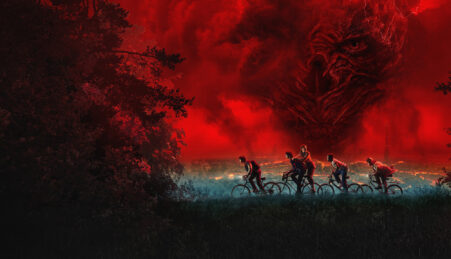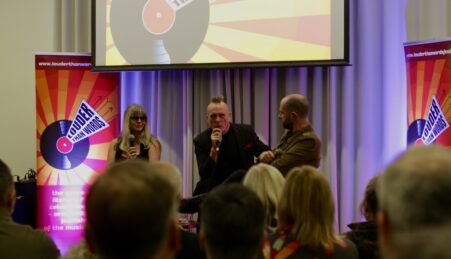By Michael Conroy
I’m going to talk about Beowulf, one of my favourite epic poems. Composed by an unknown poet, it was written in about the year 1000, having previously been disseminated by numerous Anglo-Saxon scops (bards) who had to memorise the entire thing. That’s around 3000 lines. I could talk forever about how interesting it is: the fact that it’s a poem about Norse pagans, and yet is filled with references to Christianity, the beauty of the Old English, and, most interestingly, it’s legacy in literature and cinema.
For those who haven’t read it, I recommend either the Seamus Heaney or Tolkien translations. For those who don’t know, it’s about a Scandinavian warrior called Beowulf. He’s called upon to slay the monster Grendel. He does, but then Grendel’s mother shows up and, well, the shit hits the fan. There’s also a dragon and lots of fighting.
I wrote an essay on the subject in my second year (got a pretty high first, too), in which I analysed different translations and adaptions, including 2007’s awful film version, starring a CGI rendering of Ray Winstone. As a film it’s abysmal, but as an adaptation of Beowulf it’s quite interesting. Aside from the obvious (dragons and Grendel and Grendel’s mother), it’s a more realistic depiction of the Norsemen at a time when the fires of paganism were being stamped out by the expansion of Christendom. One need only note the similarity between images of the Christian cross and Thor’s hammer Mjolnir to begin to understand how these histories are intertwined.
But anyway, enough from the scholar in me for now; time to talk about geeky stuff!
I can’t say enough about how brilliant Tolkien is, and for those of you who know a thing or two about him, other than that he’s that guy who wrote that thing about the Hobbits, you’ll know he loved Beowulf. His brilliant essay, Beowulf: The Monsters and the Critics, argued that the poem should be taken seriously by academics (having previously been dismissed as a silly fairy tale).
The poem was his biggest influence, having begun his own translation years before writing The Hobbit. I can’t talk too broadly on this, but there’s a scene in The Hobbit where Bilbo, at the behest of his dwarf companions, first wanders into the Lonely Mountain. As he’s sticking his head through the door, marvelling at how filthy stinking rich Smaug is, he spots a gold cup, which he brings outside to show his little buddies.
This whole scene is completely ripped from Beowulf.
Yep, the whole thing, it’s almost verbatim. Basically, some folks decide to take a look inside a dragon’s cave at his massive treasure hoard (what is it with dragons and hoarding things? They need psychological help, clearly.) While being nosy, they take a fancy to a silver cup. The dragon then wakes up, sees he’s been robbed (by some no-good pilfering Norsemen, no doubt), and mayhem ensues. This is clearly a comparable sequence of events: someone goes in, something is stolen/brought back, mayhem. There are even more comparisons to be drawn in The Lord of the Rings.
While it’s not as clearly overt, something similar happens in Ridley Scott’s Alien. Poor John Hurt enters the derelict spacecraft on LV 246, gets impregnated by a facehugger which he (unconscious or not) brings back with him to the Nostromo. The baby xenomorph then erupts from his chest, and everyone dies except Sigourney Weaver, who is really a subversion of the traditional Beowulf character (the typical male hero that does battle with monsters and wins). A female protagonist who, instead of using physical strength, has to outsmart the alien in order to defeat it, by blowing it out of the airlock. The Beowulf story is similarly woven into the fabric of the second film’s plot, perhaps more explicitly. The same things happen: people go into the cave-like derelict, and through doing so end up bringing something back which causes a whole lot of bother for everyone. There’s also the queen alien which, in my opinion, is very much the Grendel’s mother character here, but also functions as the dragon (the xenomorph is even referred to as such in Alien 3). Ripley herself goes into the alien hive in order to rescue Newt, brings her back, which then leads to… yes, that’s right, more mayhem. As fans will know, the queen rather miraculously hitches a ride on the dropship without being seen and, once back on-board the Sulaco, rips Lance Henriksen in half, leading Ripley to throw the alien out of the airlock. Again.
For me, Beowulf is the archetypal monster story. It has had a profound influence, explicit or not, on a great deal of monster texts. As such, I think most stories can be classified as either a Beowulf text or non-Beowulf text. I’m not saying that the entire Beowulf story has been reworked into the plethora of films and novels that could be considered Beowulf texts, but certain aspects of the poem are plain to see in their construction. You can divide the poem into two different scenarios: one where the hero is called upon to slay the monster or provide assistance, and another where someone enters the dragon’s lair, takes something that shouldn’t be taken, which then leads to retaliation. Either of these two scenarios, I believe, can be, and have been, transplanted into new monster texts, as is the case for those I have already mentioned. It’s really quite explicit in both Alien and Aliens: the Nostromo answers the derelict’s distress signal, i.e. they are called upon to provide help, then they enter the dragon’s lair etc. In the sequel, Ripley herself is called upon by the colonial marines to provide assistance, and later enters the dragon’s lair to rescue Newt, and so on.
I could go into greater detail, as there’s a lot more to say, but I surmise I’m just writing this for myself at this point. Nevertheless, I hope I’ve provided some food for thought on the lasting legacy of this wonderful piece of literature.
Michael is a 3rd year English and Creative Writing student who loves books and has probably seen too many films. He’s also looking for an agent to help get his first novel published.





Leave a reply